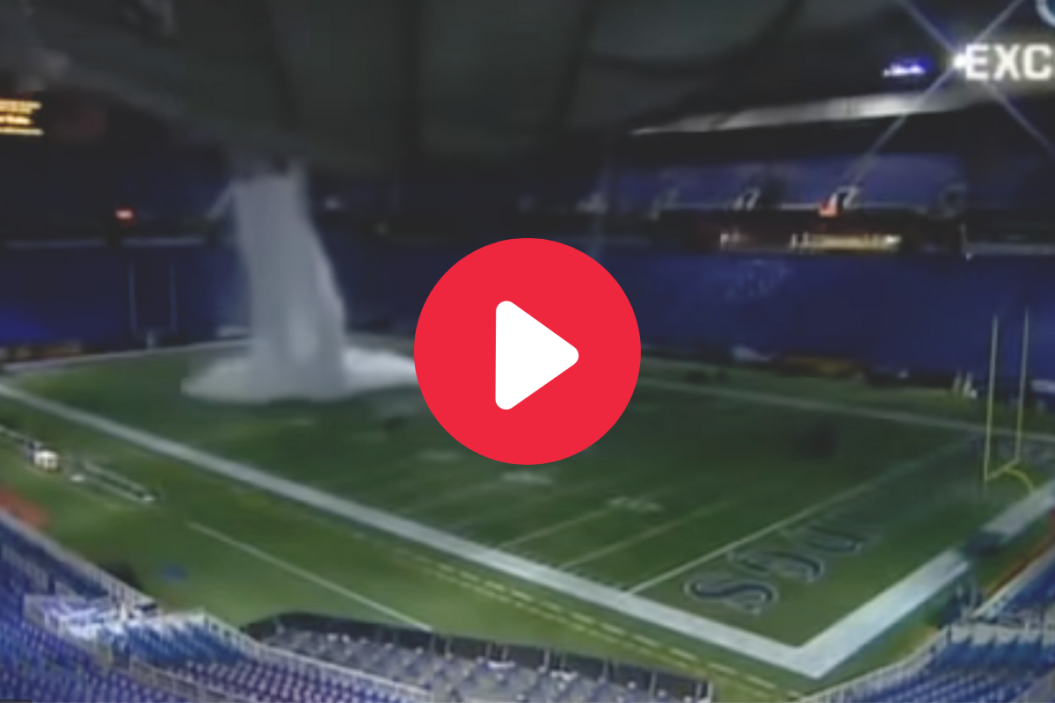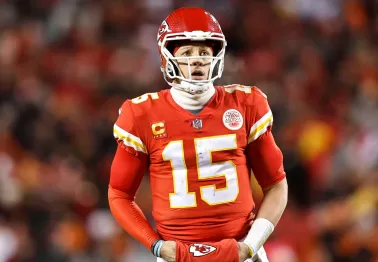The Metrodome was one of the more unique NFL stadiums that ever existed. "The Thunderdome" opened in 1982 as a replacement for the Metropolitan Stadium, which housed the Minnesota Vikings and MLB's Minnesota Twins in Minneapolis. To this day, it is still the only facility to have hosted a Super Bowl, World Series, MLB All-Star Game and a NCAA Division I Basketball Final Four.
Primarily used by the Vikings until its demolition in 2014, the stadium was also used by the Twins, the Minnesota Golden Gophers football and baseball teams as well as the NBA's Minnesota Timberwolves for one season. One of the loudest domed stadiums in pro football, the Metrodome once reached decibel levels comparable to a jet airliner, which gave a massive advantage to the home team playing in it.
"The Dome" hosted some of the more memorable plays and events in professional sports history. It's where Twins' Kirby Puckett hit his walk-off home run in Game 6 of the 1991 World Series. It's also where former Green Bay Packers quarterback Brett Favre threw his record-setting 421st career touchdown in a game against the Vikings in 2007.
ON THIS DAY... in 2007, @BrettFavre added 2 more @NFL records to his resume, taking Dan Marino's marks for TD tosses and pass attempts in the same @packers game vs @Vikings. He had already claimed John Elway?s record for most career wins by a QB in Wk2.#OnThisDay #NFL100 pic.twitter.com/mHzkAWCIUz
— Gridiron (@Gridiron) September 30, 2019
Other notable plays, games and events that took place inside the Metrodome include:
- Jan. 3, 1983: Dallas Cowboys running back Tony Dorsett's 99-yard run, which was the longest run from scrimmage in NFL history, in a Monday Night Football game against the Vikings.
- March 29, 2003: Dwyane Wade recorded the fourth triple double in NCAA Men's Basketball Tournament history while playing for Marquette.
- Nov. 4, 2007: Vikings running back Adrian Peterson rushes for an NFL single-game record 296 rushing yards on 30 carries against the San Diego Chargers. He also scored three touchdowns.
- Nov. 30, 2008: Vikings quarterback Gus Frerotte threw a 99-yard touchdown pass to Bernard Berrian against the Chicago Bears, tying an NFL record for longest pass.
- July 28, 2009: White Sox pitcher Mark Buehrle broke the MLB record for consecutive batters retired. Buehrle retired 45 in a row.
- Oct. 5, 2009: After beating the Green Bay Packers 30-23 as the quarterback of the Vikings, Brett Favre became the first quarterback in history to defeat each of the league's 32 teams.
- Oct. 27, 2013: Vikings kick returner Cordarrelle Patterson returned the opening kickoff 109 yards for a touchdown against the Packers. It was tied for the longest play in NFL history.
For all it's glory, though, the Metrodome had plenty of issues.
The roof, which was made of fiberglass and fabric, was supported by air pressure. It collapsed four times in the 1980s and had to be re-inflated despite being built in the same decade. The Metrodome's roof went more than 20 years after without any issues. That is, until 2010.
The stadium had grown old by that year. Birdair Structures — the company that manufactured and installed the roof of the Metrodome — reported to the Metropolitan Sports Facilities Commission in April 2010 and suggested the hole-filled roof be repaired soon. The commission said the Vikings stadium was in good enough shape and opted against a procedure that would've cost north of $12 million.
As everyone found out later that year in December, that was a big mistake.
When Did the Metrodome Collapse?
A nasty snowstorm pummeled Minnesota on December 10 and December 11, 2010, dropping more than 17 inches of snow on the Metrodome's roof. The storm also featured strong winds that made it impossible for crew to remove the snow from the roof, which already began sagging.
The Fox Sports camera crew was setting up for a Week 14 Vikings game the night before and noticed water leaking from the roof. They kept their cameras rolling throughout the night and captured something so unbelievable and movie-like that you have to see it to believe it.
I mean, seriously? That looks completely computer-generated.
Three panels of the roof tore completely open. Ice and snow flooded the field. No one was injured and the rest of the stadium suffered little to no damage. Even the turf wasn't damaged by thousands of pounds of snow being dumped onto it.
Days later on December 15, another panel ripped open and thrusted even more snow and ice into the dome.
The Vikings and the New York Giants were scheduled to play their Week 14 football game on December 12, but it was postponed to the next night and relocated to Ford Field in Detroit, Michigan. The Star Tribune reported some 64,000 ticket holders were expected to show up for the Vikings-Giants game, who each paid between $30 and $150 per ticket.
Minnesota also had to move its December 20 contest against the Bears to the University of Minnesota's TCF Bank Stadium. The Vikings then played their final two games on the road as scheduled.
What Caused the Metrodome to Collapse?
The Metrodome's inflatable roof was made of Teflon-coated fiberglass and fabric and was supported by air pressure to stay inflated. It weighed an astonishing 580,000 pounds. In the winter, warm air was blown into the space between the outer fiberglass layer and the inner fabric layer to melt snow on top.
Just a day before the roof's collapse in 2010, a crew hosed hot water on the roof to melt the snow. However, freezing temperatures turned that water into ice, according to the Star Tribune.
Snow began to pile throughout the night and at 5 a.m. on Sunday morning, December 12, the roof collapsed from it.
The roof was fully repaired and inflated in July 2011 and other construction updates concluded by August 2011.
How Many Times Had the Metrodome Collapsed?
The 2010 incident wasn't the first time the Metrodome's roof collapsed from heavy snows and high winds. It also occurred four times in the 1980s.
In 1981, more than a foot of snow collapsed it. The following year, more heavy snowfall caused a tear in the roof just four days before the Vikings were set to play the Cowboys in the last game of the 1982 regular season.
The dome's roof once against deflated and tore due to snow in the spring of 1983, postponing a Minnesota Twins game. Then in April 1986, the Metrodome roof tore but didn't deflate due to high winds, which delayed a Twins game against the California Angels.
The Metrodome's Demolition
The Vikings laid their stadium to rest in April 2014 after it was demolished for their new stadium. The team played its final home game in the Metrodome on December 29, 2013, defeating the Detroit Lions 14-13. Removal of the stadium's seats began the next day.
Hubert H. Humphrey Metrodome may have been an absolute nightmare logistically for teams playing in it, but there was something lovable about it. Either way, the 2010 Metrodome roof collapse was one of the wildest stadium mishaps in NFL history.
This post was originally published on February 20, 2020.

